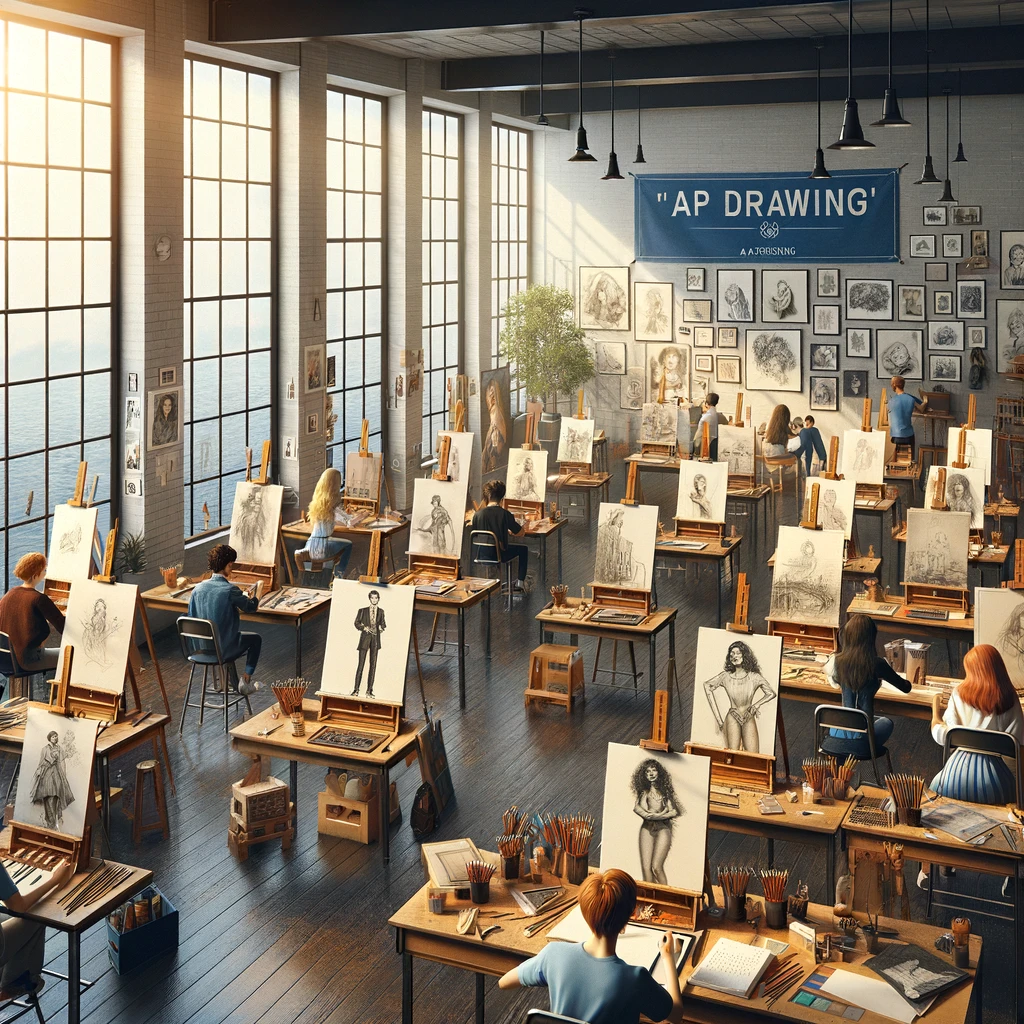AP Art History
AP Drawing, a course designed for students who are passionate about expressing themselves through the visual arts. This course is your canvas to explore, experiment, and create drawings that reflect your unique perspective and skills.
Course Overview
AP Drawing is an immersive experience that encourages you to develop your drawing skills through various materials and processes. You’ll create artwork that showcases your personal growth, experimentation, and mastery of drawing principles.
Skills Development
In AP Drawing, you’ll cultivate a range of artistic skills, including:
- Investigative Thinking: Delving into the materials, processes, and ideas that fuel artistic creation.
- Creative Practice: Engaging in continuous practice, experimentation, and refinement of your work.
- Artistic Communication: Conveying your thoughts and concepts through visual art and design.
Equivalency and Prerequisites
- College Course Equivalent: Comparable to an introductory college course in drawing.
- Recommended Prerequisites: No formal prerequisites, but any experience in creating art through drawing will be beneficial.
Portfolio Submission
- Portfolio Due Date: May 10, 2024, by 8 PM ET.
- AP Art and Design students must submit their digital portfolios by this deadline.
Course Content
The AP Drawing curriculum revolves around three big ideas:
Big Idea 1: Investigate Materials, Processes, and Ideas
- Focus: Understanding the decision-making process behind artistic creation.
- Practice: Reflect on experiences, explore artistic mediums, and evaluate art and design works.
Big Idea 2: Make Art and Design
- Focus: Learning the techniques and processes used by artists and designers.
- Practice: Formulating guiding questions, experimenting with combinations of materials, and applying the elements and principles of art and design.
Big Idea 3: Present Art and Design
- Focus: Discovering the rationale behind presenting artwork to audiences.
- Practice: Articulate the use of materials and processes, showcase skills, and demonstrate the evolution of your work.
Preparing for Artistic Expression
To thrive in AP Drawing, immerse yourself in creative exploration, connect with art and design traditions, and embrace the iterative process of making art. Let your creativity flow onto the canvas of possibility! 🎨✨
What are the key components of an AP Drawing portfolio?
An AP Drawing portfolio consists of three main components, each reflecting your artistic journey and skills:
Investigation and Documentation (Big Idea 1):
- Reflect on your experiences and document them.
- Explore various materials, processes, and ideas used by artists and designers.
- Connect your work to art and design traditions.
- Evaluate and analyze works of art and design.
Creation (Big Idea 2):
- Engage in the creative process:
- Develop guiding questions to guide your work.
- Experiment, practice, and revise as you create your pieces.
- Choose and combine materials, processes, and ideas.
- Apply the elements and principles of art and design.
- Engage in the creative process:
Presentation (Big Idea 3):
- Explain how you used materials, processes, and ideas in your work.
- Describe how the work shows your skills.
- Identify the questions that guided you during the creation process.
- Highlight experimentation, practice, and revision in your work.

Remember, your portfolio is a reflection of your artistic growth and expression. Showcase your creativity, technical abilities, and thoughtful engagement with the world of drawing! 🎨✨
Why Take AP Drawing?
Taking AP Drawing can be a highly rewarding experience for students who are passionate about visual arts. Here are some reasons why you might consider enrolling in this course:
Artistic Development:
- AP Drawing allows you to refine your drawing skills, experiment with different mediums, and develop a personal style.
Portfolio Creation:
- You will create a comprehensive portfolio that can be used for college applications, scholarships, or professional opportunities.
College Credit:
- A strong portfolio can earn you college credit, potentially saving time and money in your post-secondary education.
Creative Expression:
- The course provides a platform for you to express your ideas and emotions through art, fostering personal growth and self-discovery.
Skill Enhancement:
- You’ll enhance not only your drawing skills but also your ability to critique art, understand compositional elements, and appreciate aesthetic principles.
Professional Preparation:
- If you’re considering a career in art or design, AP Drawing is an excellent way to prepare for future studies and professional work.
Cultural Engagement:
- You’ll learn to connect your work to broader art and design traditions, gaining a deeper appreciation for cultural and historical contexts.
Interdisciplinary Learning:
- Drawing intersects with history, literature, and other disciplines, providing a rich, interdisciplinary learning experience.
No Prerequisites:
- The course is accessible to all students, regardless of their previous experience with drawing, making it an excellent opportunity for both beginners and advanced artists.
Personal Achievement:
- Completing an AP course and portfolio is a significant accomplishment that can boost your confidence and academic profile.
By taking AP Drawing, you’re not just learning to create art; you’re embarking on a journey of exploration and opening doors to future opportunities in the art world. 🎨✨










